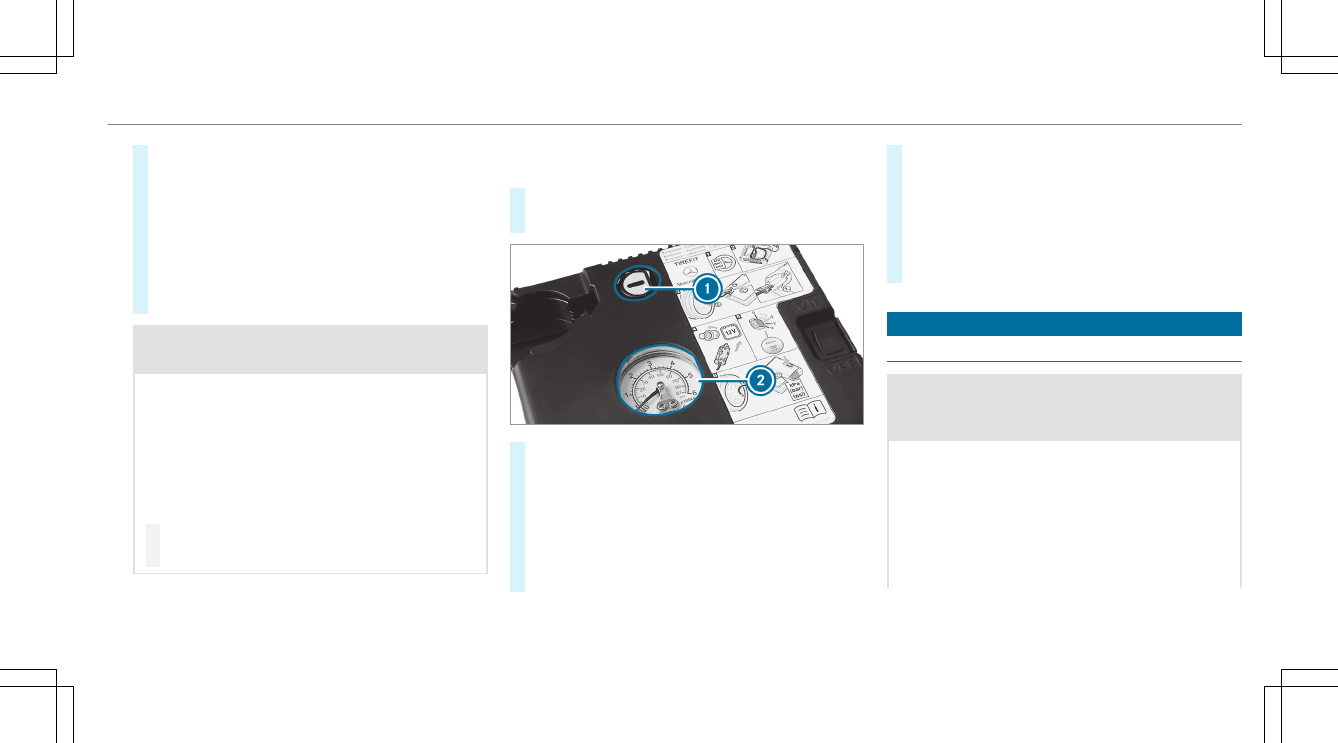#
Stow the tire sealant bottle and the tire infla‐
tion compressor.
#
Pull away immediately.
#
Stop driving after approximately ten minutes
and check the tire pressure using the tire
inflation compressor.
The tire pressure must now be at least
130 kPa (1.3 bar/19 psi).
&
WARNING Risk of accident due to the
specified tire pressure not being reached
If the specified tire pressure is not reached
after a brief drive, the tire is too badly dam‐
aged. The tire sealant cannot repair the tire
in this instance.
Damaged tires and tire pressure that is too
low can significantly impair the braking prop‐
erties and the handling characteristics.
#
Do not continue driving.
#
Consult a qualified specialist workshop.
In cases such as the one mentioned above, con‐
tact an authorized Mercedes-Benz Center. Or
call 1-800-FOR-MERCedes (in the USA) or
1-800-387-0100 (in Canada).
#
To increase the tire pressure: switch on
the tire inflation compressor.
#
To reduce the tire pressure: press pressure
release button 1 next to manometer 2.
#
When the tire pressure is correct, unscrew
the filling hose from the valve of the sealed
tire.
#
Screw the valve cap onto the valve of the
sealed tire.
#
Pull the tire sealant bottle out of the tire
inflation compressor.
The filling hose stays on the tire sealant bot‐
tle.
#
Drive to the nearest qualified specialist work‐
shop and have the tire, tire sealant bottle
and filling hose replaced there.
Battery (vehicle)
Notes on the 12 V battery
&
WARNING Risk of an accident due to
work carried out incorrectly on the bat‐
tery
Work carried out incorrectly on the battery
can, for example, lead to a short circuit. This
can lead to function restrictions in safety-rel‐
evant systems, for example the lighting sys‐
tem, ABS (anti-lock braking system) or ESP
®
(Electronic Stability Program). The operating
safety of your vehicle may be restricted.
Breakdown assistance
499

